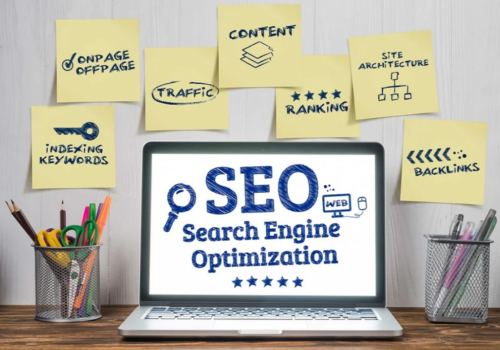With my expertise in local SEO, I’ll guide you in driving traffic and attracting customers. Unlike traditional SEO, which targets a broader audience, local SEO focuses on specific geographical areas.
You can reach potential customers near you who are actively searching for your products or services by optimizing your online presence for local searches.
Let’s explore effective strategies to boost your website traffic and engage with local customers.
8 Strategies To Boost Your Website Traffic With Local SEO
Discover how Local SEO can significantly increase your website traffic, connecting you directly with customers in your area.

1. Research Local Keywords
When you built your website, you probably did some technical stuff to make sure it shows up in search results. But if you want to attract local customers, regular SEO might not be enough.
Instead, you need to find the words and phrases people in your area use when they’re looking for things like yours.
These are called local keywords. They show you what people want and help you make your website match what they’re searching for.
To find these keywords, you can use a tool that gives you a list of words and phrases people use when searching online.
It tells you how many people search for each word and how hard it is to rank them. You want to focus on words with lots of searches but not too much competition.
Also, look for longer phrases because they’re more specific and easier to rank for. And check out what keywords your competitors are using to get some ideas for your own website.
2. Optimize Your Website
Once you have your list of local keywords, it’s time to use them. You can include these keywords in your website’s content, meta description, URL, and image description.
This helps search engines understand what your business is about and makes your site more relevant to local searches.

You can also make special pages for each place you serve. This lets you customize your content and keywords for each area’s needs.
Make sure your website works well on mobile, too. Lots of people search for local stuff on their phones, so a website that works smoothly on mobile can boost your rankings and give users a better experience.
3. Use Google My Business
After you’ve made your website local-friendly, it’s time to use Google My Business (GMB). It’s a free tool from Google that helps businesses show up on Google Maps and local searches.
First, claim your business on GMB if you haven’t already done so. Make sure all the info there is correct: your business name, address, phone number, website, and category.
You can also add photos of your business so people know what to expect when they visit. This helps make sure you get the right kind of customers.
Ask your customers to leave reviews on your GMB listing. Good reviews can boost your online reputation and bring in more local customers.
And don’t forget to respond to reviews – it shows you care about your customers’ opinions.
4. Check Your NAP
Keeping your business info consistent everywhere online is super important for local SEO.
This means your business name, address, and phone number should be the same on your website, Google My Business, social media, and other online listings.
If there are any differences in this info, it can confuse search engines and potential customers, which isn’t good for your local SEO.
To stay on top of this, regularly check and update your business info if anything changes. You can also use tools that automatically update this info across all platforms, so you don’t have to do it manually. It saves you time and makes sure everything stays consistent.
5. Create Local Content
When you’re trying to get your business noticed by local customers, it’s smart to create content just for them.
This means making stuff like blog posts, videos, or guides that talk about things happening in your area and how they relate to what you do.
For example, if you run a bakery, you could write about local food festivals or events in your town. This helps show that you’re plugged into the community and know what’s going on.
Plus, it can attract more local customers to your business.
6. Take Advantage of Social Media
In today’s digital world, being active on social media is super important for any business.
It’s not just about chatting with your followers and showing off your brand—it’s also a big part of boosting your local search engine ranking.

Make sure your social media profiles mention important keywords and your location. And don’t forget to interact with your followers by responding to their comments and reviews.
You can also run special deals or contests for people in your area and share local news or events.
Plus, use your social media accounts to promote your Google My Business listing and share any local-themed content from your website. This can help bring more people to your site and improve your local SEO efforts.
7. Build Quality Local Links
Getting links from other trusted websites to yours, called backlinks, is really important for SEO. And for local SEO, having links from local sources is key for better rankings.
You can start by asking local businesses and groups in your area if they’d link back to your site. Offer to do the same for them as a thank-you.
Writing guest posts for local blogs is another good way to get backlinks and show that you know your stuff in the community. Just make sure your content is helpful and fits the local audience.
You can also submit your site to local directories or online groups that are related to your business. While these links might not boost your rankings a lot, they’ll still help more people find you online.
Lastly, think about sponsoring local events or teaming up with other businesses nearby. This not only gets you more backlinks but also makes you more well-known and trusted in your area.
8. Monitor and Adapt
Just like with any SEO plan, it’s crucial to keep an eye on how things are going and adjust as needed.
Keep track of your local rankings, website traffic, and other important stats to see if your local SEO methods are paying off.
If you see your rankings or traffic dropping, take a look at your strategies and see what might need tweaking. Maybe you need to update your business info, create more local content, or reach out to more local sites for links.
Final Thoughts
By using these methods in your local SEO plan, your business can see big improvements. You’ll get more people finding your website, visiting it, and maybe even becoming customers.
Keep at it, and you’ll show everyone that your business is the best choice in town.



